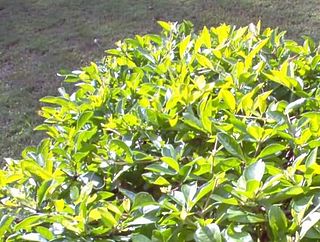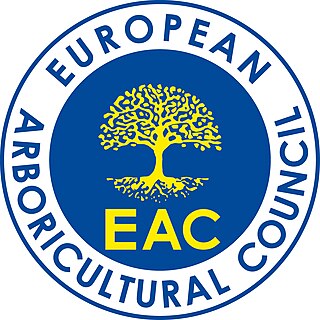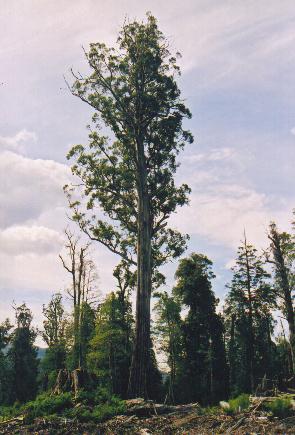Professional certification, trade certification, or professional designation, often called simply certification or qualification, is a designation earned by a person to assure qualification to perform a job or task. Not all certifications that use post-nominal letters are an acknowledgement of educational achievement, or an agency appointed to safeguard the public interest.

Fruit tree pruning is the cutting and removing of selected parts of a fruit tree. It spans a number of horticultural techniques. Pruning often means cutting branches back, sometimes removing smaller limbs entirely. It may also mean removal of young shoots, buds, and leaves.

Horticulture is the art and science of growing plants. This definition is seen in the etymology of "horticulture", which is derived from the latin words hortus, which means "garden" and cultura which means "to cultivate". Horticulture is very broad and encompasses many domains. It is normally small-scale, as compared to the larger-scale cultivation of crops that is seen in agriculture.

Arboriculture is the cultivation, management, and study of individual trees, shrubs, vines, and other perennial woody plants. The science of arboriculture studies how these plants grow and respond to cultural practices and to their environment. The practice of arboriculture includes cultural techniques such as selection, planting, training, fertilization, pest and pathogen control, pruning, shaping, and removal.

An arborist, tree surgeon, or arboriculturist, is a professional in the practice of arboriculture, which is the cultivation, management, and study of individual trees, shrubs, vines, and other perennial woody plants in dendrology and horticulture.

Integrated pest management (IPM), also known as integrated pest control (IPC) is a broad-based approach that integrates both chemical and non-chemical practices for economic control of pests. IPM aims to suppress pest populations below the economic injury level (EIL). The UN's Food and Agriculture Organization defines IPM as "the careful consideration of all available pest control techniques and subsequent integration of appropriate measures that discourage the development of pest populations and keep pesticides and other interventions to levels that are economically justified and reduce or minimize risks to human health and the environment. IPM emphasizes the growth of a healthy crop with the least possible disruption to agro-ecosystems and encourages natural pest control mechanisms." Entomologists and ecologists have urged the adoption of IPM pest control since the 1970s. IPM allows for safer pest control.

Pruning is a horticultural, arboricultural, and silvicultural practice involving the selective removal of certain parts of a plant, such as branches, buds, or roots.

Urban forestry is the care and management of single trees and tree populations in urban settings for the purpose of improving the urban environment. Urban forestry involves both planning and management, including the programming of care and maintenance operations of the urban forest. Urban forestry advocates the role of trees as a critical part of the urban infrastructure. Urban foresters plant and maintain trees, support appropriate tree and forest preservation, conduct research and promote the many benefits trees provide. Urban forestry is practiced by municipal and commercial arborists, municipal and utility foresters, environmental policymakers, city planners, consultants, educators, researchers and community activists.
Articles on forestry topics include:.
The International Society of Arboriculture, commonly known as ISA, is an international non-profit organization headquartered in Atlanta, Georgia, United States. The ISA serves the tree care industry as a paid membership association and a credentialing organization that promotes the professional practice of arboriculture. ISA focuses on providing research, technology, and education opportunities for tree care professionals to develop their arboricultural expertise. ISA also works to educate the general public about the benefits of trees and the need for proper tree care.

Alex L. Shigo was a biologist, plant pathologist with the United States Forest Service whose studies of tree decay resulted in many improvements to standard arboricultural practices. He travelled and lectured widely to promote understanding of tree biology among arborists and foresters. His large body of primary research serves as a broad foundation for further research in tree biology.

The Certified Arborist credential identifies professional arborists who have a minimum of three years' full-time experience working in the professional tree care industry and who have passed an examination covering facets of arboriculture. The Western Chapter of the International Society of Arboriculture (ISA) started the certification program in the 1980s, with the ISA initiating it in 1992.
Following is a partial list of professional certifications in financial services, with an overview of the educational and continuing requirements for each; see Professional certification § Accountancy, auditing and finance and Category:Professional certification in finance for all articles. As the field of finance has increased in complexity in recent years, the number of available designations has grown, and, correspondingly, some will have more recognition than others. Note that in the US, many state securities and insurance regulators do not allow financial professionals to use a designation — in particular a "senior" designation — unless it has been accredited by either the American National Standards Institute or the National Commission for Certifying Agencies.
The Davey Tree Expert Company, also known as Davey Tree, is a North American employee-owned corporation. The company's main services are research driven tree services, grounds maintenance and environmental consulting services for residential, utility, commercial and environmental partners in the United States and Canada. Davey has employees throughout the United States and Canada.
Sustainable landscaping is a modern type of gardening or landscaping that takes the environmental issue of sustainability into account. According to Loehrlein in 2009 this includes design, construction and management of residential and commercial gardens and incorporates organic lawn management and organic gardening techniques.

The European Arboricultural Council (EAC) based in Bad Honnef, Germany is a forum where delegates from a wide range of arboricultural organizations throughout Europe meet. The goal of the EAC is to elevate the status and to raise the professional level of competence within arboriculture. This objective is carried out by liaising on matters ranging from research and education to successful tree establishment and the improvement of safe working practices.

Trees can live for a long time but eventually die, either from natural causes or killed by man. Ill-health of trees can be diagnosed, and early treatment, pruning or felling to prevent the spread may result in timber stocks and amenity trees being saved. Tree owners and Arborists/arboriculturists need to be aware of the risk posed by hazardous trees. Construction projects sometimes avoidably damage trees.
An adult-gerontology nurse practitioner (AGNP) is a nurse practitioner that specializes in continuing and comprehensive healthcare for adults across the lifespan from adolescence to old age.

Tree care is the application of arboricultural methods like pruning, trimming, and felling/thinning in built environments. Road verge, greenways, backyard and park woody vegetation are at the center of attention for the tree care industry. Landscape architecture and urban forestry also set high demands on professional tree care. High safety standards against the dangers of tree care have helped the industry evolve. Especially felling in space-limited environments poses significant risks: the vicinity of power or telephone lines, insufficient protective gear and narrow felling zones with endangered nearby buildings, parking cars, etc.. The required equipment and experience usually transcends private means and is often considered too costly as a permanent part of the public infrastructure. In singular cases, traditional tools like handsaws may suffice, but large-scale tree care usually calls for heavy machinery like cranes, bucket trucks, harvesters, and woodchippers.
Clinical social work is a specialty within the broader profession of social work. The American Board of Clinical Social Work (ABCSW) defines clinical social work as "a healthcare profession based on theories and methods of prevention and treatment in providing mental-health/healthcare services, with special focus on behavioral and bio-psychosocial problems and disorders". The National Association of Social Workers defines clinical social work as "a specialty practice area of social work which focuses on the assessment, diagnosis, treatment, and prevention of mental illness, emotional, and other behavioral disturbances. Individual, group and family therapy are common treatment modalities". Clinical social work applies social work theory and knowledge drawn from human biology, the social sciences, and the behavioral sciences.









